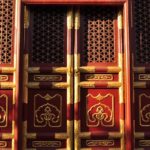6 Hidden Gems in Beijing, China

When you think about Beijing, few images of this city might come to mind: dense population, high pollution, the Chinese capital and the Forbidden City. As one of China’s four ancient capitals, Beijing stands for both old and new. The city is constantly buzzing with noise, people, traffic and activities. Well, if you are looking for an adventurous trip (if you speak no Chinese), and actively looking for some culture shock (if you are not Chinese), this is your town.
Apart from the well known tourist places, Beijing offers a range of attractions, which might not be that famous, but will definitely win your heart with their unique charm.
6 Hidden Gems in Beijing, China
1. Jinshang Park
This little charming park is right next to the Forbidden City, opposite to the exit of the Palace Museum. The
history of the Jingshan Park can be traced back to 1276, when the Yuan Dynasty was ruling the country and Beijing was first appointed as the capital of the middle kingdom.
History is present in every corner of the park. From the tree where the last Ming Dynasty emperor Ming Si Zong (1611 – 1644) hung himself for losing his country to the Manchus, to the memory of foreign troops invading Beijing city during Qing Dynasty period (1644-1912).
The most exciting part of the park is the spectacular 360 degree view that it offers of Beijing. On any given day, the view is always breathtaking. The central point of Beijing is also located in this park, right under the temple on the top of the hill.
*Bonus: the entrance fee of the park only costs RMB 2.
2. Summer Palace
Branded as a “masterpiece of Chinese landscape garden design” by UNESCO, the Summer Palace will take your breath away. Dominated by the Longevity Hill and Kunming Lake, the Summer Palace is covered by picturesque hilly landscapes and a serene lakeside.
Originally built during the Qing Dynasty in 1752, the “old” Summer Palace was burned down by the British and French armies during the Second Opium War. The restoration work began in 1900, and what you can see today is mostly the reconstructed palace.
*Bonus: the Summer Palace and the Botanic Garden are near the Fragrant Hill, located north-west of Beijing. You can visit all of these places in one day.
3. The Hutongs
Some call it the slum, some call it the actual Beijing. However you see this area, you must visit. Hutong is the
name for the traditional architecture type native to Beijing. It is now a combination of old and new, as many original buildings have been demolished.
The houses in Hutongs are called Si He Yuan (literally means four-walled compounds), where each Si He Yuan used to be occupied by one family. However, most of the Si He Yuan have more than one family living in there, and some of them have been refurnished, which have caused the prices to rise.
*Bonus: You can rent a bicycle to explore the small alleyways without the disruptions of heavy traffic that you’ll experience on normal roads.
Nevertheless, you can experience the peacefulness of the traditional Chinese life the minute you step into the Hutong area. Nowadays, there are many cafes, bars and restaurants there, and their uniqueness and quality services will surprise you. Some will be overpriced.
*Bonus: You can rent a bicycle to explore the small alleyways without the disruptions of heavy traffic that you’ll experience on normal roads.
4. Provincial Cuisines of China
This might sound like a strange idea, if someone is in Beijing, why would they look for food from other provinces? Strangely enough, you can easily find other provinces’ best food in this city. As the capital of China for the past eight centuries, Beijing set up provincial representative offices’ restaurants to present their best delicacies to the people of the capital.
Nowadays, you can visit these restaurants to taste the fine cuisines prepared by the finest chefs from all around the country.
*Bonus: there are 23 provinces in China!
5. Caochangdi
Very few people have heard of the Caochangdi Art District. It is the home of many modern Chinese art galleries but still has the old village area surrounding it. Step inside the district, and you will find both contemporary architectures that will capture your artistic heart.
The gallery area is quiet and peaceful, and you can enjoy a
coffee near any galleries. Outside the gallery area, the district is jammed with local village shops, restaurants and residential apartments.
*Bonus: most galleries offer free entry.
6. Non-Tourist Areas of The Great Wall
It is no secret that the Great Wall is a must visit when you come to Beijing. However, most travelers tend to go to the sections that are well-maintained and easy to hike around. The true hidden gems of the Great Wall are the sections that are not well-maintained and broken. The view of the mountains will definitely make you appreciate the natural beauty.
*Bonus: you can stay in one of the villages near the wall to experience the local village life. The villagers will serve you food for a fee.
6 Hidden Gems in Beijing, China
Related Reading
- China Travel Tips: Amanda’s Take on Health, Safety and Romance
- Three Things that Chinese People Find Funny about Foreigners
- Why Marriage in China is a Failing Prospect
- Menstruation in China: Your Guide for Eating, Drinking and Buying Tampons
- Questioning the East vs. West Divide in China
- 12 Tips for the First-Time Traveller to China
- How to Avoid China’s Crowds and Chaos
- Your Guide to Travel Scams in China
Have you traveled to China? What were your impressions? We’d love to know if there’s any important information you recommend adding to this list. Email us at editor@pinkpangea.com for information about sharing your experience and advice with the Pink Pangea community. We can’t wait to hear from you.
6 Hidden Gems in Beijing, China top photo credit: unsplash.com








